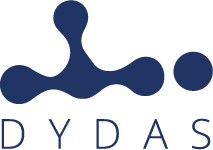Di fronte all’importanza a livello globale del supercalcolatore Leonardo, di cui riportiamo di seguito un estratto tradotto in italiano del Comunicato Stampa della Commissione Europea, il progetto DYDAS (cofinanziato dal programma europea Connecting Europe Facility – CEF) appare naturalmente importante su scala nazionale ed europea, ricordiamo qui infatti che la sua specificità è quella di testare le capacità di analisi dei dati di una piattaforma basata su un’architettura di dati geospaziali in grado di consentire l’integrazione continua e la gestione di grandi set di dati in modo geospaziale, attraverso la Geospatial Data Architecture, che consente l’applicazione di servizi innovativi basati su HPC-AI sfruttando i Big Data in termini di variazioni sia spaziali che temporali e consentendo l’implementazione di intelligence di geolocalizzazione e trend/analisi di impatto geospaziale. Tutto ciò in linea con l’obiettivo del programma di lavoro CEF 2018 e del bando CEF-T-5, il progetto contribuisce all’infrastruttura dati europea migliorando la condivisione e il riutilizzo di dati pubblici e privati, consentendo l’uso di dati dinamici set di dati come il satellite di osservazione della Terra e i dati raccolti dai veicoli, promuovendo la R&S basata sull’HPC attraverso un laboratorio di ricerca integrato e un sistema di base di conoscenze e collaborazione scientifica, offrendo servizi e strumenti basati sull’HPC facili da usare, attraverso interfacce specializzate e progettati per fornire esperienze utente diverse a una vasta gamma di utenti.
Tuttavia qui è importante menzionare l’importanza dell’inaugurazione avvenuta lo scorso 24 novembre 2022, per la quale la Commissione Europea, insieme alla European High-Performance Computing Joint Undertaking (EuroHPC JU), al Ministero italiano dell’Università e della Ricerca e al consorzio CINECA (Consorzio Interuniversitario dell’Italia Nord Est per il Calcolo Automatico), dell’ultimo supercomputer europeo e a valenza internazionale: LEONARDO, situato presso il Tecnopolo di Bologna, in Italia.
LEONARDO è un sistema di supercalcolo di livello mondiale, sviluppato e assemblato in Europa. Quando sarà completamente operativo, avrà una potenza di calcolo di quasi 250 petaflop (250 milioni di miliardi di calcoli al secondo). LEONARDO è attualmente classificato come il quarto supercomputer più potente al mondo. Si tratta di un investimento congiunto di 120 milioni di euro, metà dei quali provenienti dalla Commissione e l’altra metà dal Ministero dell’Università e della Ricerca italiano e dal consorzio CINECA composto da altri cinque paesi EuroHPC partecipanti (Austria, Grecia, Ungheria, Slovacchia e Slovenia).
LEONARDO è il secondo dei supercomputer pre-esascala europei ad essere messo in funzione, dopo LUMI a Kajaani, in Finlandia. Combina componenti di calcolo ad alte prestazioni all’avanguardia e l’uso dell’intelligenza artificiale per eseguire compiti altamente complessi. In quanto tale, consentirà una ricerca senza precedenti sul cancro e la scoperta di farmaci, la comprensione del funzionamento del cervello umano, la scoperta di tecnologie energetiche pulite, l’elaborazione di modelli climatici più precisi, nonché l’aiuto nella previsione e nel monitoraggio di disastri naturali e pandemie.
Il sistema di supercalcolatore LEONARDO si concentra sulla sostenibilità ambientale ed è dotato di strumenti che consentono una regolazione dinamica del consumo energetico, garantendo così un equilibrio intelligente e ottimale tra risparmio energetico e prestazioni. Inoltre, utilizza un sistema di raffreddamento ad acqua per una maggiore efficienza energetica.
I servizi informatici forniti da CINECA con LEONARDO saranno ulteriormente potenziati dall’integrazione di un computer quantistico, poiché CINECA è stata selezionata anche come entità ospitante per uno dei primi computer quantistici costruiti in Europa.
Prossimi passi
L’implementazione dell’infrastruttura dati e di calcolo ad alte prestazioni europea continua con l’installazione in corso del supercomputer a petascala Deucalion in Portogallo e del terzo supercomputer pre-esascala MareNostrum 5 in Spagna.
Inoltre, nel giugno 2022 l’EuroHPC JU ha già annunciato nuovi siti per i supercomputer, uno dei quali sarà il primo supercomputer a esascala in Europa: JUPITER, che sarà ospitato nel Jülich Supercomputing Center in Germania.
Nell’ottobre 2022 la EuroHPC JU ha anche annunciato sei siti per ospitare computer quantistici, che saranno integrati con i supercomputer esistenti.
Inoltre, è previsto il lancio di un bando per un secondo supercomputer a esascala europeo nel 2023, nonché l’implementazione di ulteriori supercomputer e computer quantistici nel 2023 e oltre.
Il contesto
CINECA è un consorzio senza scopo di lucro, composto da 70 università italiane, 40 istituzioni nazionali e dai Ministeri dell’Università e della Ricerca e dell’Istruzione italiani. I cinque paesi che partecipano alla EuroHPC JU sono: Grecia, Ungheria, Austria, Slovenia e Slovacchia.
LEONARDO si unisce ora ai supercomputer esistenti della EuroHPC JU: Discoverer in Bulgaria, MeluXina in Lussemburgo, Vega in Slovenia, Karolina in Czechia e LUMI in Finlandia.
L’impresa comune europea per il calcolo ad alte prestazioni (EuroHPC JU) è un’entità legale e finanziaria creata nel 2018 per consentire all’UE e ai paesi partecipanti a EuroHPC di coordinare i propri sforzi e mettere in comune le proprie risorse con l’obiettivo di rendere l’Europa un leader mondiale nel supercalcolo. Nel luglio 2021 il Consiglio ha adottato il regolamento EuroHPC JU, apportando un ulteriore investimento di 7 miliardi di EUR.
Per maggiori informazioni:
European High-Performance Joint Undertaking
Factsheet: European High Performance Joint Undertaking
New world-class European supercomputer inaugurated in Italy: LEONARDO
Given the global importance of the Leonardo supercomputer, of which we report below an extract from the Press Release of the European Commission, the DYDAS project (co-financed by the European program Connecting Europe Facility – CEF) naturally appears important on a national and EU level, and we recall here that its specificity is to test the data analysis capabilities of a platform based on a geospatial data architecture capable of allowing the continuous integration and management of large datasets in a geospatial way, through Geospatial Data Architecture, which allows the application of innovative services based on HPC-AI by exploiting Big Data in terms of both spatial and temporal variations and allowing the implementation of geolocation intelligence and trends/geospatial impact analysis. All this in line with the objective of the CEF Work Program 2018 and the CEF-T-5 call, the project contributes to the European data infrastructure by improving the sharing and re-use of public and private data, enabling the use of dynamic data datasets such as Earth observation satellite and vehicle collected data, promoting HPC-based R&D through an integrated research laboratory and knowledge base system and scientific collaboration, offering easy-to-use HPC-based services and tools use, through specialized interfaces and designed to provide different user experiences to a wide range of users.
However, here it is important to mention the importance of the inauguration which took place on 24 November 2022, for which the European Commission, together with the European High-Performance Computing Joint Undertaking (EuroHPC JU), the Italian Ministry of University and Research and the CINECA consortium (Interuniversity Consortium of North-East Italy for Automatic Calculation), of the latest European and international supercomputer: LEONARDO, located at the Bologna Technopole, in Italy.
LEONARDO is a world-class supercomputing system, developed and assembled in Europe. When fully operational, it will have a computing power of nearly 250 petaflops (250 million billion calculations per second). LEONARDO is currently placed as the fourth most powerful supercomputer in the world. It is a joint investment of €120 million, half of which comes from the Commission and the other half from the Italian Ministry of Universities and Research and the CINECA consortium consisting of five more participating EuroHPC countries (Austria, Greece, Hungary, Slovakia, and Slovenia).
LEONARDO is the second of the European pre-exascale supercomputers to be put into operation, after LUMI in Kajaani, Finland. It combines state-of-the-art high-performance computing components and the use of artificial intelligence to perform highly complex tasks. As such, it will enable unprecedented research into cancer and drug discovery, understanding the functioning of the human brain, discovering clean energy technologies, doing more precise climate modelling, as well as helping with predicting and monitoring natural disasters and pandemics.
The LEONARDO supercomputer system focuses on environmental sustainability and is equipped with tools enabling a dynamical adjustment of power consumption, thus granting a smart and optimal balance between energy saving and performance. Moreover, it uses a water-cooling system for increased energy efficiency.
The computing services provided by CINECA with LEONARDO will be further enhanced by the integration of a quantum computer, as CINECA has also been selected as a hosting entity for one of the first European-built quantum computers.
Next Steps
The deployment of the European world-class high-performance computing and data infrastructure continues with the ongoing installation of the Deucalion petascale supercomputer in Portugal, and the third European pre-exascale MareNostrum 5 supercomputer in Spain.
Further to this, new sites for supercomputers have already been announced by the EuroHPC JU in June 2022, with one of them to be Europe’s first exascale supercomputer: JUPITER, which will be hosted in the Jülich Supercomputing Centre in Germany.
In October 2022 the EuroHPC JU also announced six sites to host quantum computers, which will be integrated with existing supercomputers.
Additionally, a call for a second European exascale supercomputer in 2023 is expected to be launched, as well as the deployment of additional supercomputers and quantum computers in 2023 and beyond.
Background
CINECA is a non-profit consortium, made up of 70 Italian universities, 40 national institutions and the Italian Ministries of Universities and Research, and of Education. The five countries participating from the EuroHPC JU are: Greece, Hungary, Austria, Slovenia, and Slovakia.
LEONARDO now joins the existing supercomputers of the EuroHPC JU: Discoverer in Bulgaria, MeluXina in Luxembourg, Vega in Slovenia, Karolina in Czechia, and LUMI in Finland.
The European High-Performance Computing Joint Undertaking (EuroHPC JU) is a legal and funding entity created in 2018 to enable the EU and EuroHPC participating countries to coordinate their efforts and pool their resources with the objective of making Europe a world leader in supercomputing. In July 2021, the Council adopted the EuroHPC JU Regulation, bringing a further investment of €7 billion.
For More Information
European High-Performance Joint Undertaking


